
The Ultimate Digital Marketing ROI Guide for 2025: Measuring Success Beyond Traditional Metrics
The digital marketing space constantly evolves, bringing new challenges for measuring ROI. From tracking the customer journey across diverse platforms to leveraging advanced analytics tools, marketers must stay ahead of the curve to prove real business impact. Businesses can transform their marketing efforts into measurable success by focusing on data-driven strategies and continuous improvement.
This guide explores cutting-edge strategies and tools for 2025, empowering businesses to maximize their ROI through AI-powered insights, optimized content strategies, and multi-channel integration. Whether you’re refining your KPIs or considering hiring a marketing agency, this is your roadmap to achieving and demonstrating digital marketing success in the upcoming year.
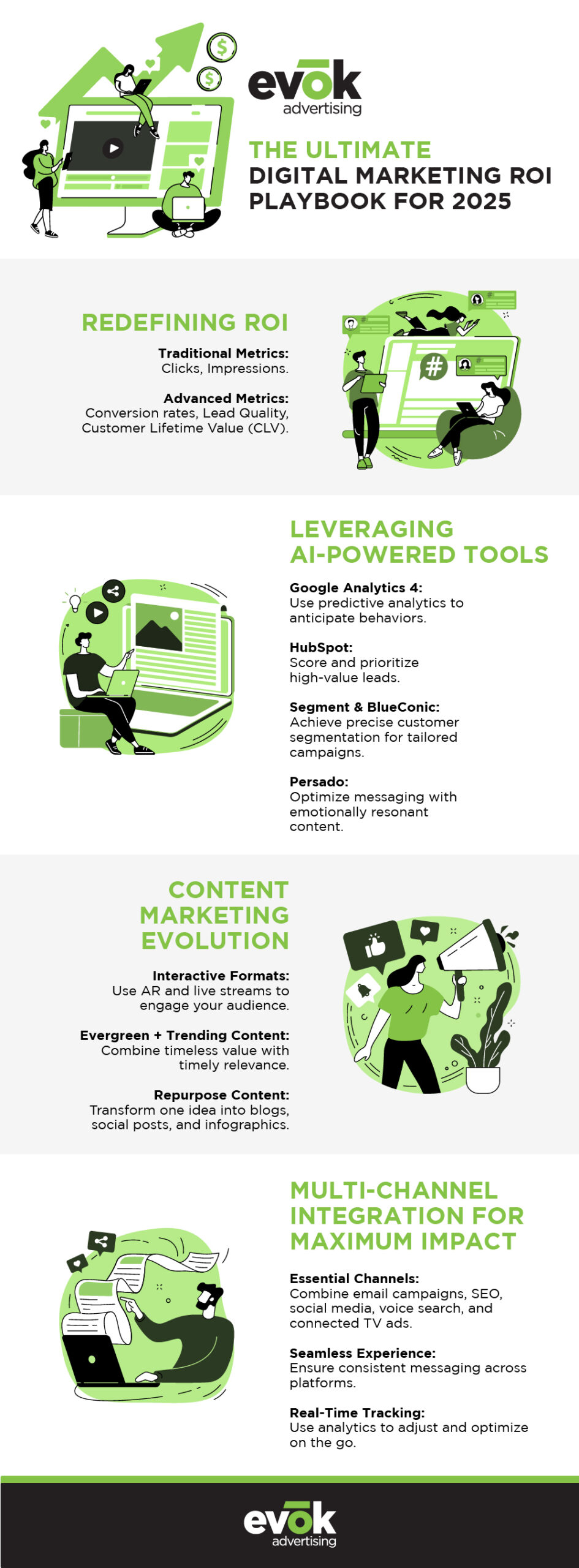
1. Redefining ROI in Digital Marketing
Redefining ROI in digital marketing means moving beyond surface-level metrics like clicks and impressions to focus on outcomes that align with business objectives. While traditional metrics can provide an overview, they often fail to capture the full scope of a campaign’s impact on customer retention, revenue generation, and brand loyalty. ROI must reflect a deeper understanding of how marketing efforts drive long-term value. Businesses should prioritize Key Performance Indicators (KPIs) that matter, such as:
- Conversion rates: How many users take a desired action?
- Lead quality: Are the leads generated by campaigns likely to convert?
- Customer lifetime value (CLV): What is a customer’s long-term financial contribution?
By redefining what success looks like, marketers can better justify their strategies and investments to stakeholders.
2. Leveraging AI-Powered Analytics Tools
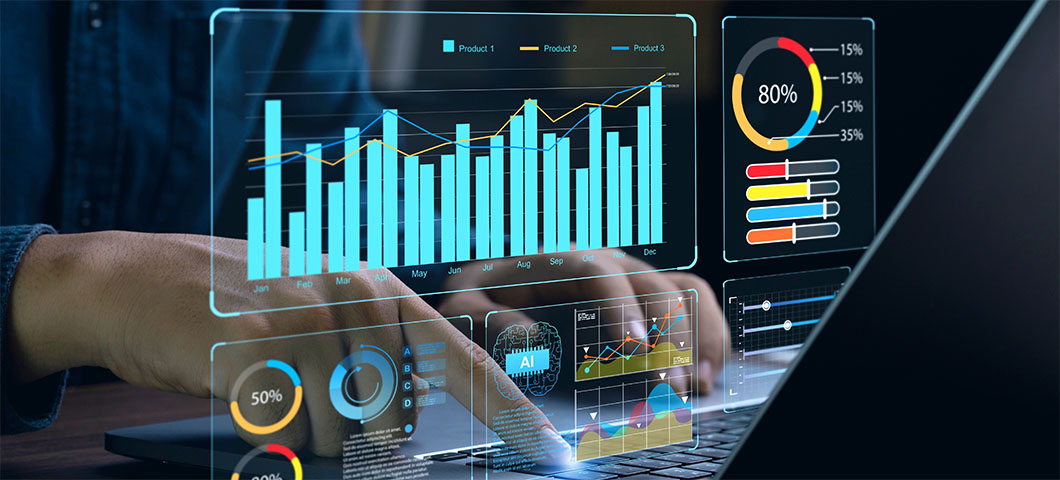
AI-powered tools have revolutionized digital marketing by offering unparalleled insights into campaign performance. Platforms like Google Analytics 4 have set the bar with predictive analytics, enabling marketers to anticipate user behaviors and adjust campaigns proactively. This level of foresight helps businesses optimize spending and predict which target audience segments are most likely to convert.
Another standout tool, HubSpot, has refined lead scoring and campaign automation. By assigning value to potential customers based on their behavior and engagement, businesses can prioritize high-value leads, so that time and resources are spent where they matter most.
Beyond these, AI-driven customer segmentation tools, like Segment or BlueConic, are becoming essential. They enable businesses to analyze customer data and divide their audience into meaningful categories, personalizing campaigns more precisely. For example, an e-commerce brand could target repeat customers with exclusive offers while engaging first-time buyers with welcome discounts, boosting conversion rates across all segments.
Moreover, AI transforms content recommendations through platforms like Persado, which generates emotionally resonant messaging tailored to specific audience segments. These dynamic capabilities ensure every piece of content maximizes impact and ROI.
3. Content Marketing and Content Strategy
Content remains king, but in 2025, the focus is on creating experiences rather than just information. Interactive formats such as augmented reality (AR) experiences and live streams are becoming indispensable. For example, a home improvement brand could use AR to let customers visualize how furniture might look in their spaces, turning curiosity into purchases.
Blogging is also evolving. Brands must prioritize evergreen content that stays relevant over time while weaving in trending topics to capture immediate interest. A travel company, for instance, could combine long-term guides on “Top Destinations for Solo Travelers” with timely blogs like “Best Places to Visit During the Lunar Eclipse of 2025.”
Content repurposing is another key strategy for maximizing ROI. A single podcast episode can be transformed into blog posts, social media snippets, and even an infographic, ensuring widespread reach and efficiency in content production.
By incorporating customer feedback and fostering continuous improvement, businesses can ensure long-term success and relevance in a competitive market.
4. The Role of Social Media Platforms
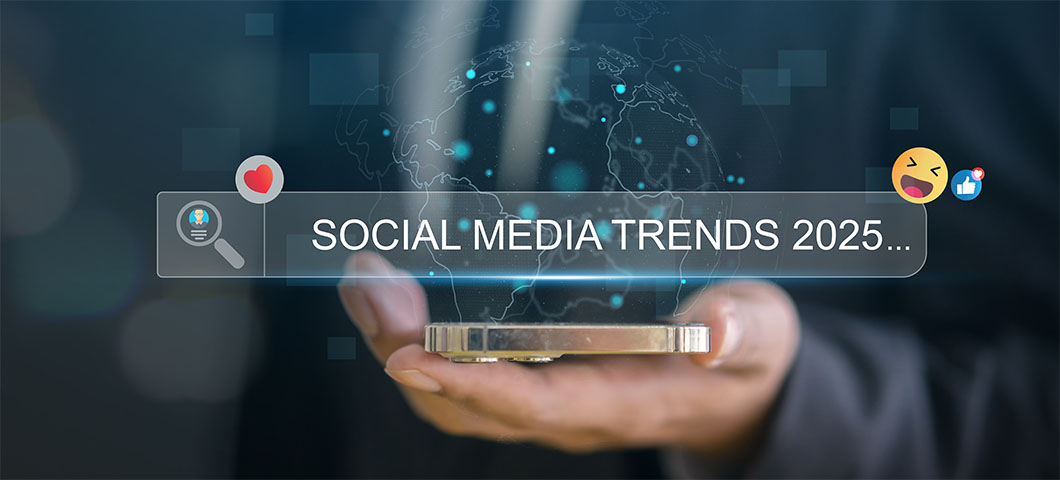
Social media platforms are evolving faster than ever, with new features shaping how brands connect with their audiences. Short-form video content like TikTok trends or Instagram Reels will dominate in 2025. These formats allow businesses to deliver quick, compelling messages while tapping viral culture. For instance, a travel brand showcasing destination highlights in 15-second clips can significantly boost engagement and drive inquiries.
Another trend is the rise of AI-driven ad placements, where algorithms like Meta’s Advantage+ or Pinterest’s predictive technology optimize ads in real-time. These tools analyze user preferences, behaviors, and past interactions, making sure that ads reach the most relevant audience at the perfect moment. For example, a fitness brand could target users recently engaged with workout equipment posts, increasing click-through and conversion rates.
Businesses also benefit from interactive features on platforms like YouTube and Facebook, such as polls, Q&A stickers, and live-streamed shopping events. These create two-way communication channels that boost engagement and trust. Meanwhile, user-generated content (UGC) continues to thrive as a cost-effective way to amplify authenticity. Encouraging customers to share their experiences with a brand on social media fosters loyalty and acts as social proof, influencing new prospects.
Businesses must stay updated on platform algorithms and audience behavior shifts to capitalize on these trends fully. Using AI to monitor these changes ensures marketing strategies remain effective and ROI-focused.
TikTok Live and TikTok Shop
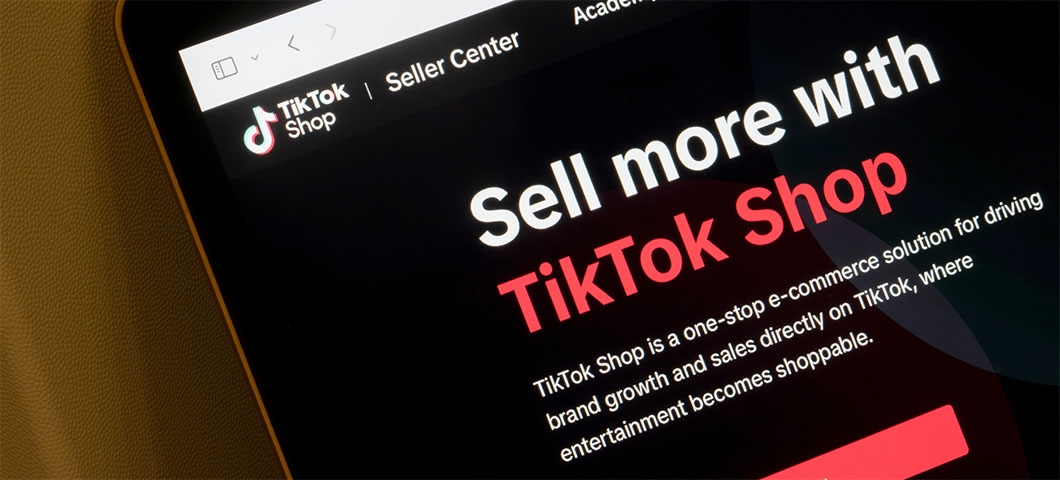
While its future remains unclear, TikTok remains a viable platform for reaching target audiences in the meantime, offering immense opportunities for growth and engagement.
TikTok Live and TikTok Shop have emerged as game-changers in social commerce, creating dynamic opportunities for brands to drive engagement and sales in 2024. TikTok Live allows businesses to connect with audiences in real-time, fostering authenticity and immediacy that traditional content formats often lack. These live sessions can feature product demos, Q&A sessions, or exclusive announcements, creating a sense of urgency and community among viewers and directly connects to TikTok Shop.
TikTok Shop streamlines the buying process directly within the app. By integrating shoppable links into videos and live streams, brands can reduce friction in the customer journey, increasing conversion rates. The platform’s algorithm-driven content discovery also ensures that products reach highly targeted audiences, enhancing ROI.
5. Multi-Channel Marketing Strategies
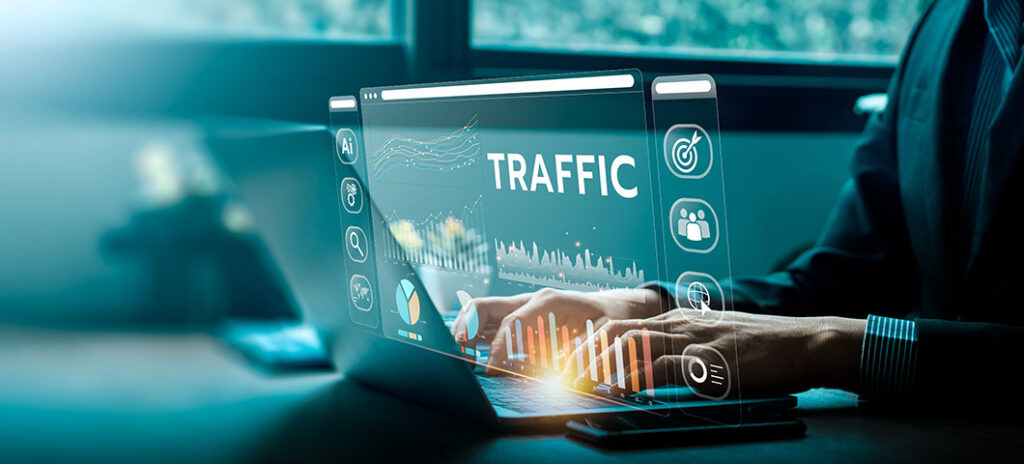
To maximize ROI, businesses must adopt multi-channel marketing strategies that integrate various online and offline efforts. Identifying the right marketing channels for your target audience is crucial. For instance, combining email campaigns with social media ads and SEO-driven blog posts ensures a cohesive and far-reaching presence. Cross-channel marketing amplifies brand visibility and creates a seamless customer experience, encouraging higher engagement and conversions.
Emerging trends in 2025 include integrating voice search optimization and connected TV (CTV) advertising into multi-channel strategies. These additions cater to changing consumer habits, establishing brand relevance across platforms. Additionally, tracking the performance of each channel through robust analytics tools allows businesses to allocate resources more effectively, driving better results and higher ROI.
6. Key Metrics for Measuring ROI
The proliferation of data has made tracking ROI both easier and more complex. While metrics like conversion rates remain foundational, 2025 demands a broader perspective. Engagement metrics like dwell time, which measures how long users interact with your content, are gaining prominence as indicators of meaningful audience connections.
Additionally, metrics like Net Promoter Score (NPS) can reveal how likely customers are to recommend your brand, indirectly impacting ROI. For example, an NPS survey following a successful email campaign might show increased brand advocacy, translating into more referrals and organic growth.
AI tools provide dynamic dashboards that allow businesses to track these metrics in real time, making adjustments on the fly. For instance, if a video ad isn’t performing well, marketers can tweak its targeting or content mid-campaign to improve results.
Dynamic dashboards powered by AI provide real-time visibility into these metrics, enabling businesses to make data-driven decisions more efficiently than ever before.
7. The Long-Term Perspective
Building a long-term marketing strategy is about cultivating trust and creating meaningful connections. Programs like customer loyalty tiers, which reward repeat purchases with exclusive perks, encourage customers to stick with your brand. A travel company might offer priority bookings and discounts to repeat clients, fostering loyalty while driving repeat business.
Thought leadership is another pillar of long-term success. By publishing well-researched whitepapers or hosting industry webinars, brands position themselves as trusted authorities. For example, a software company could release an annual report on emerging tech trends, reinforcing its role as an innovator.
Continuous improvement remains critical. By analyzing past campaigns, identifying areas for growth, and embracing innovation, businesses can ensure their strategies remain effective and adaptable.
Your 2025 ROI Playbook in Action
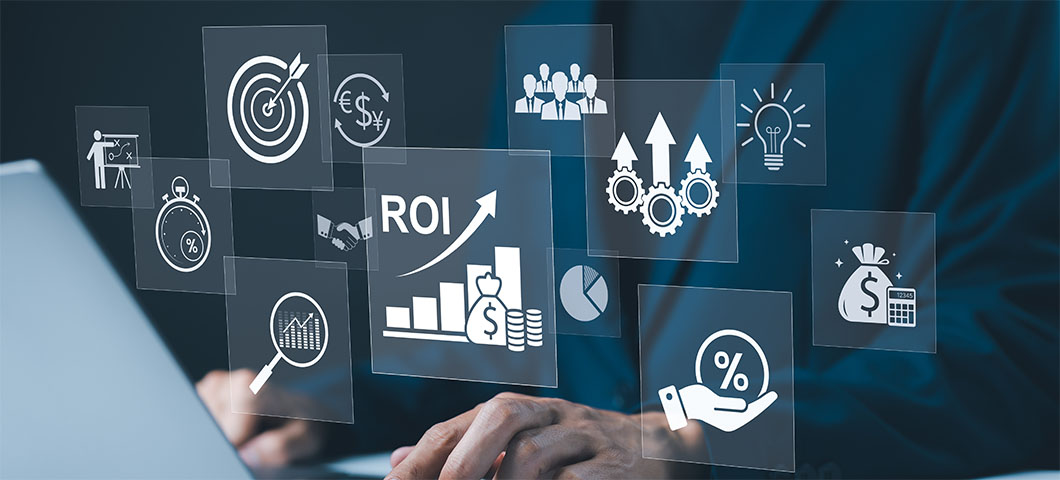
Maximizing digital marketing ROI in 2025 requires a comprehensive approach that leverages AI-powered insights, robust analytics tools, and multi-channel integration. Businesses can transform their marketing efforts into measurable success by focusing on key metrics, optimizing content strategies, and embracing long-term growth. Whether you’re looking to refine your KPIs or considering the benefits of hiring a marketing agency, the strategy outlined in this guide provides a clear path to achieving and demonstrating real business impact.
Ready to elevate your digital marketing strategy? Contact us to drive real results in 2025!